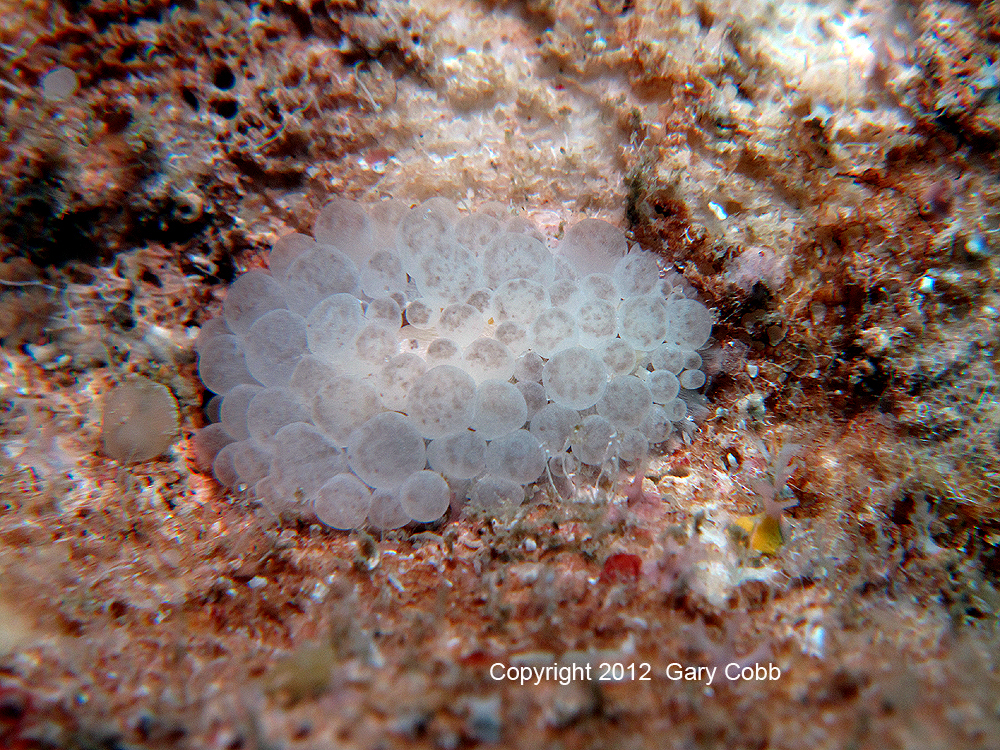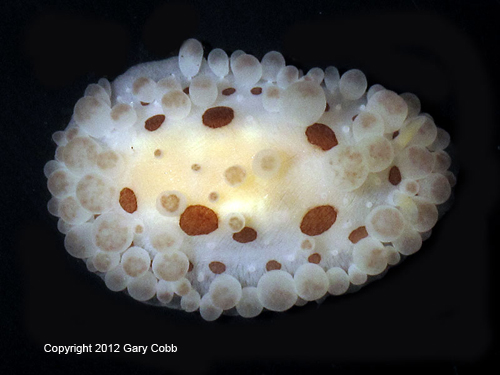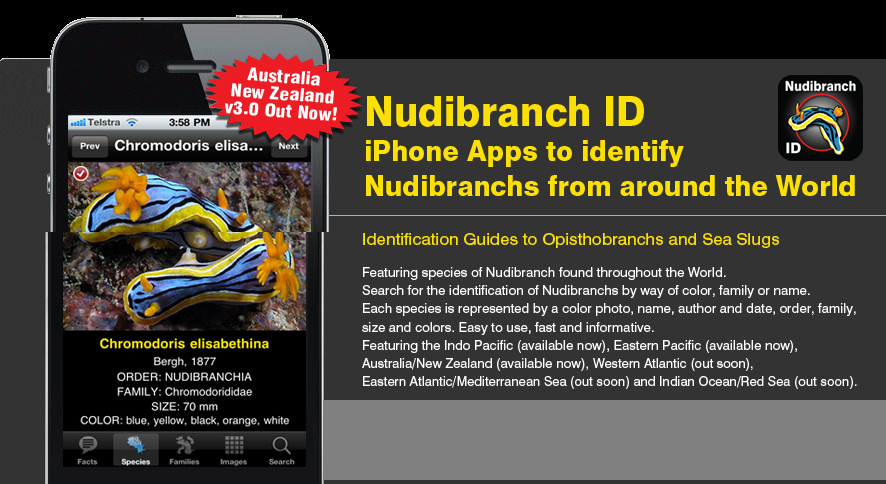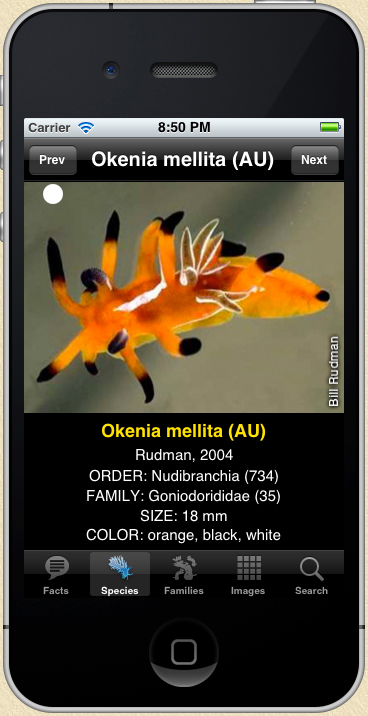 |
Ceratophyllidia africana
Image courtesy of Gary CobbCape Moreton, Queensland, Australia
Canon G10 in Ikelite housing with one Inon Z220 strobe
Ceratophyllidia africana with autotomized papillae
 |
Ceratophyllidia africana
Eliot, 1903
It wasn't really in a cave, but more at the back of a deeply recessed overhang in 10 metres of water, where I came across several pizza-sized old coral plates. I carefully turned each of them over to examine the growth on the underside, searching for reclusive sea slugs, and just as carefully replaced them in their original position. The last was the largest and located right at the back. I reached in and turned it over and noticed, what I at first thought were, 3 small white anemones growing on the undersurface. A moment of confusion entered my mind where it wrestled with the fact that I should not be seeing what I thought I was seeing. Anemones aren't found underneath rocks and coral plates. I pulled out my knife and just lifted up the edge of one of the white creatures and it immediately floated off, rolled over and there, right in front of my eyes was all the evidence I needed. I was staring at a beautiful molluscan foot. Eureka! I caught it and positioned it back upon the plate. After about 30 seconds its foot took hold again and then I noticed the rhinophores extended up past the stalked papillae that I had momentarily mistaken for swollen anemone tentacles. Never in our wildest imaginings did we ever expect to find phyllidiids of the Ceratophyllidia genus in our area, the Sunshine Coast region of southeast Queensland, Australia. Little wonder I was somewhat baffled. This was a new record for Australia. Externally there are two significant features that characterize members of the Ceratophyllidia genus, the soft, stalked and bulbous papillae carried upon the dorsum, that the animal readily autotomizes when handled, and the partially fused oral tentacles . |
Richard Willan has recommended that we use Ceratophyllidia africana for our Australian specimens "because that is the most recent validly published name and we, as responsible scientists, are obliged to use it until a proper study is published demonstrating the existence of additional species."
The diversity of sea slugs never ceases to amaze us.
References:
Brunckhorst, D.J. 1993. The Systematics and Phylogeny of Phyllidiid Nudibranchs (Doridoidea). Australian Museum. (Records of the Australian Museum. Supplement 16.)
Gosliner, T.M., Behrens, D.W. & Valdes, A. 2008. Indo-Pacific Nudibranchs and Sea Slugs. Sea Challengers Natural History Books & California Academy of Sciences.
Queensland, Australia
November 2012
Send Dave email at marineimages@hotmail.com
November 2012
or contact Gary Cobb directly at gary@nudibranch.com.au

|

|
